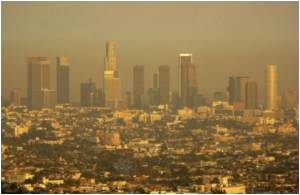
Air quality tests taken during the September 2009 dust storm showed that Brisbane's most harmful ultrafine particle pollution from vehicle emissions, which contain 250 well-known carcinogens, almost disappeared as the eerie orange haze settled over the city.
Dr Jayaratne's team, led by ILAQH director Professor Lidia Morawska, said the dramatic shift in air quality was the result of a process of polydisperse coagulation whereby smaller particles, such as diesel emissions, diffuse on to the surface of larger particles, such as dust.
"We have seen this happen in the laboratory but never in an environment like this, given the very specific conditions," he said.
"One of the reasons vehicle emissions are so scary is that the ultrafine particles are able to penetrate deeper into the lungs, in the alveoli, whereas larger particles such as dust tend to get trapped in the upper-respiratory system. Asthma is often caused by larger particles, but the finer particles are associated with long-term health issues such as cardiovascular mortality."
The threshold for the process of polydisperse coagulation usually occurs when large dust particles reach concentrations of "a couple of hundred" micrograms per cubic metre.
Advertisement
However, at the peak of the dust storm in the Brisbane CBD at noon on September 23, 2009, the measured concentration shot up to 6000 micrograms per cubic metre, causing the vehicle emission particles to almost disappear.
Advertisement
Dr Jayaratne said he also investigated causes of severe Australian dust storms in order to predict future occurrences and believes we may see a similarly severe storm this year if dry conditions continue.
"We found dust storms in Australia usually occur after flood events, similar to what Brisbane experienced in January," he said.
Source-Medindia







